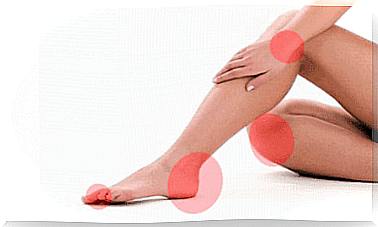What Are Ostomies?
Ostomas are surgical procedures that involve major changes in lifestyle, especially when they are permanent. Sometimes they are the only way to save a person’s life. With education, practice, and support, it is possible to lead a relatively normal life.

Ostomies are openings made in the skin during surgery to allow the evacuation of certain types of waste. Sometimes they are connected to the intestines, and other times to the bladder. They are put in place when the body is no longer able to expel waste naturally.
On the other hand, ostomies can be temporary or permanent. Temporary ostomies are useful for transient waste disposal. Once the area of dysfunction is restored, the stoma opening is closed and the normal route of elimination resumes.
Permanent ostomies, on the other hand, are applied when the bowels or bladder show irreparable damage. It is therefore impossible to restore their normal operation. In these cases, an extirpation is done, and the stoma will stay in place for life.
In all cases, the waste that leaves the body through an ostomy goes into a pocket attached to the skin. This pocket must be continuously connected to the opening and its contents emptied regularly.
Types of ostomies

Basically, there are three types of ostomies: colostomy, ileostomy, and urostomy. The first is located in the colon, the second in the ileum which is the lowest part of the small intestine. Then, the third is located at the level of the bladder. Let’s see the main characteristics of each of them:
- Colostomy. A colostomy is a surgical procedure in which part of the colon is passed through the abdominal wall to form a stoma, or an opening. There are several sizes. In addition, it can be located on the right side of the abdomen, on the left side or in the center.
- Ileostomy. This is a surgical operation that involves moving the lower end of the ileum, through an opening in the abdominal wall. It is usually located in the lower right part of the stomach. It is often necessary for diseases such as ulcerative colitis, hereditary polyposis, cancer and Crohn’s disease.
- Urostomy. This is an opening made during surgery to divert urine from the bladder to the outside. Usually, it is used in cases of bladder cancer, birth defects or spinal cord injury.
Living with an ostomy
The presence of an ostomy is a life changing radically. The first major change is that waste is no longer voluntarily removed. There is no control over the timing of the evacuation and this obviously generates a certain degree of anxiety. People also have the fear of emitting an unpleasant odor or drawing too much attention.
Added to this is the fact that it takes some time to learn how to empty and adjust the pouch that is connected to the stoma. Accidents are very common at the start. Because it is generally necessary to empty the bag between five and eight times a day. The lack of dexterity is therefore a bit difficult at first.
In addition, it is quite normal to feel frustration as well as uncertainty after the surgery. As well as feelings of sadness and anger. Such an upheaval transforms the self-image and obliges to make psycho-social adjustments. It is therefore essential to have psychological support, or to be able to talk about it freely with people you trust.
Ostomas in children

Obviously, ostomies cause upheaval in anyone’s life. However, in the case of children, this situation usually involves a greater impact due to their emotional immaturity.
At first, it will not be easy for them to get their life back into their own hands. Particularly because of the fear of being different from others or because they fear being rejected.
The best thing to do is to speak candidly and naturally with the child. It is not difficult to imagine how complicated it is for the child to carry his pocket with his garbage wherever he goes. Younger children tend to be more relaxed in these types of situations. On the other hand, for adolescents, it is much more complex.
Your child may need some time to adjust to their new situation. He will especially be afraid of a leak or a problem with the stoma. It is therefore essential to teach him what to do in these cases, giving him confidence in his own resources to resolve the difficulties.









